Podcast: Play in new window | Download
Subscribe: Apple Podcasts | Spotify | Email | TuneIn | RSS
Vienna brings to mind images of grand architecture, the sounds of classical music, and the smell of coffee and sacher torte.
In this interview with Katarina Bordet, we explore the Gothic and Baroque churches, the museums, and the iconic coffee shops, as well as the darker places to visit — the asylum, the catacombs, and the echoes of psychiatry and fascism. The city is dense with history and culture, and we can only brush the surface today, but I hope you enjoy the interview.
Katharina Bordet is an Austrian fantasy and nonfiction author as well as a lawyer, podcaster, and photographer.
Show notes
- Cathedrals, churches, and grand architecture
- Catacombs, the asylum, churchyard, and darker places to visit
- Vienna’s coffee culture, cafe recommendations, and the importance of cake
- Music and opera in Vienna including outdoor venues
- Local crafts and food at the Christmas Markets
- The Viennese personality
- Recommended books set in Vienna
You can find Katharina Bordet at bruadarach.at
Transcript of the interview
Joanna: Katharina Bordet is an Austrian fantasy and nonfiction author as well as a lawyer, podcaster, and photographer. Welcome, Katharina.
Katharina: Thank you, Joanna. Thank you for inviting me.
Joanna: I am so thrilled to talk about Vienna because, as we record this, we’re still in lockdown here in the UK and we’re still in pandemic times. And I actually have a guidebook here on my desk, ‘A Weekend in Vienna.’ So, this is like virtual travel.
Katharina: It’s really tough and, at the same time, helpful to listen to your travel podcast because like, ‘I want to go there.’
Joanna: Exactly. I’s fantasy travel at the moment. Now, let’s get into it because you have a series called ‘Wiener Blut’ translated as Viennese blood.
Tell us a bit about your personal history with Vienna and what the city means to you and why you write about it.
Katharina: I grew up in the Austrian countryside about two hours away from Vienna. I came to Vienna to study law. And so I didn’t really hang out. I was at uni and stuff like that, but I didn’t go around to touristy places much.
I’ve been part of the writing and podcasting community for many years. I’ve been listening to audiobooks for ages and I think, ‘I want to read a book too. I want to write a book too.’ And then I met my husband, who’s a Scotsman. He came over, obviously, to visit, and then we went around all the cafes and I started showing him the things in Vienna. The more touristy stuff.
The book idea started when we were sitting in the Café Landtmann right across the city hall. On the back of the menu, there was the story about how the goats in old Mesopotamia discovered coffee in the first place. And I was like, ‘Oh, that’s kind of a funny story.’ I like goats. And that’s kind of hilarious.
I started researching the legends around coffee that we have in Vienna. And because I’m quite a coffee junkie, researching the different types of coffee there are, why they’re named the way they are was interesting.
So, that’s why, in the first book, every chapter has the title of a different specialty coffee. That’s how the idea came to be and it just took off from there.
Joanna: What parts of Vienna feature in your books?
Katharina: I’ve mostly written about really the cafe culture. I’ve done a little bit of traveling around Austria. In the second book, I also go to Budapest because, back in the old days, the Austrian and Hungarian Empire was just such a thing. And a lot of the Austrian coffee culture is very much reflected in Budapest as well.
There’s this very, very strong link between those two cities. I thought relations spread that wide because they were all around these kind of medieval times.
As far as Vienna is concerned, I tried to stick very close to the city center where you could really walk along and have a read and get a feeling of the place. In the third book, we go up the Kahlenberg, which is really the only, I want to say mountain in Vienna. I’ve been really growing up in the mountains, so that’s, like, more of a speed bump.
And you have fantastic views over the city. So, I try to, every once in a while, drop in places, but I wanted to be less than a guidebook, more a story of someone who’s actually living there and hangs out, goes about their day and you just get a more of a feel of the city.
Joanna: Let’s get into some of the places to visit. I was reading about the St. Charles Church or the Karlskirche was built to give thanks for the passing of a plague epidemic, which just seems so appropriate.
What is special about the St. Charles Church? What are some of the interesting things about it?
Katharina: Yes. It’s a massive location also above the biggest underground. It’s on the south bit of the city center. And the city center isn’t really big. But the thing is there’s a big square in front of it. It’s one of my favorite Christmas markets as well.
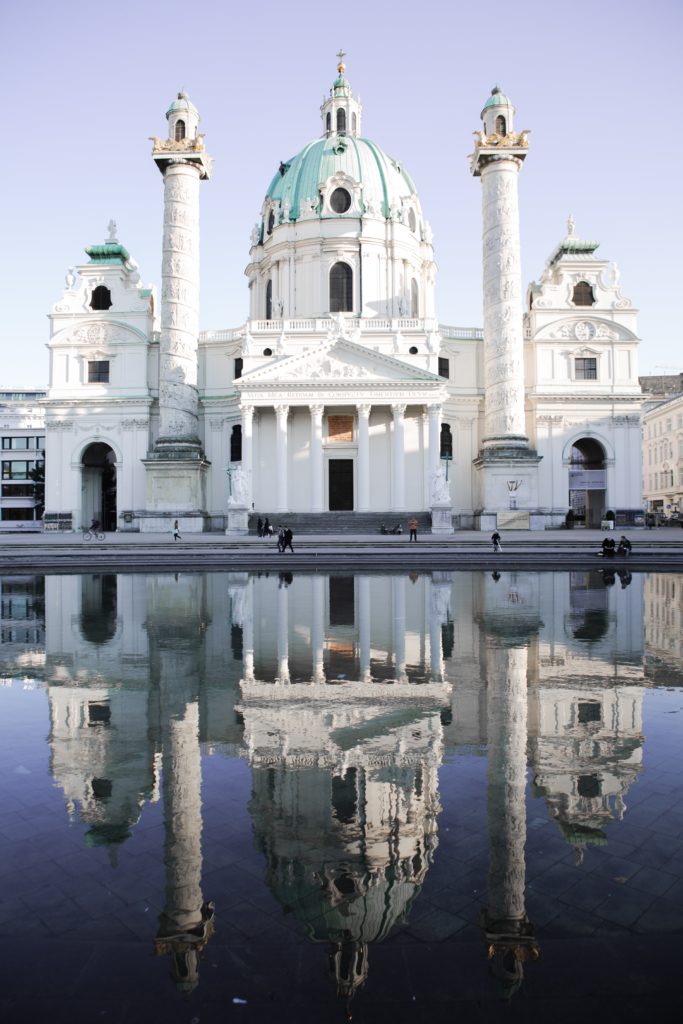
The thing about Viennese and the plague, it has just such a deep history and there’s a lot of our culture that revolves around old legends and stuff. And when the big plague hit, there were even more legends around that. So, that was just one of those situations where it was just stuck with the people, I think, and there were just a lot of plague monuments, there’s the church and on the Graben, there is a big monument as well.
Well, I think it’s very, very nice to look at. It’s a bit more modern, so it’s very Baroque. A lot of Vienna is more like Roman, Gothic, darker, so it makes a nice difference because it’s light and it’s just really, really pretty to look at.
It’s also a very, very massive church to go in. I’m not sure if you’d want to go to Mass there. It’s also supposed to be, let’s say, a bit more on the conservative end of the scale. That’s why I’ve never really hung out there for the Mass bit.
But it’s just one of those things you just like to sit in front of and watch, especially at night. It’s just a stunning place to be. And if there are no religious bits going on, then it’s really nice to look at. And I like that it’s just so much lighter than the rest of the city center, I guess.
Joanna: I really like Gothic cathedrals, but when you say Baroque, it brings to mind that white and then the gold, like, a lot of gold, gold bling.
Katharina: Yes. White and gold and the turquoise roofs. Yes.
I love Gothic churches, but that’s why I think you have so much Gothic, even the town hall is new Gothic. That’s why I think it’s really nice to have the difference between the imperial Gothic, just massive buildings, to have these things that are a bit of a juxtaposition, I guess.
Joanna: What about any of the other interesting or beautiful religious buildings or architecture that people might like to visit?
Katharina: The St. Stephen’s Cathedral, which is bang on in the city center, is obviously the biggest Gothic cathedral and it’s just a really great place to go to because, on the one hand, you can go up the spire and have great look over the city.
And it has catacombs, which is more of a thing for you, I guess. So, yes, there are a lot of catacombs in Vienna as well. But it’s just a good starting point to start off your trip through the city.
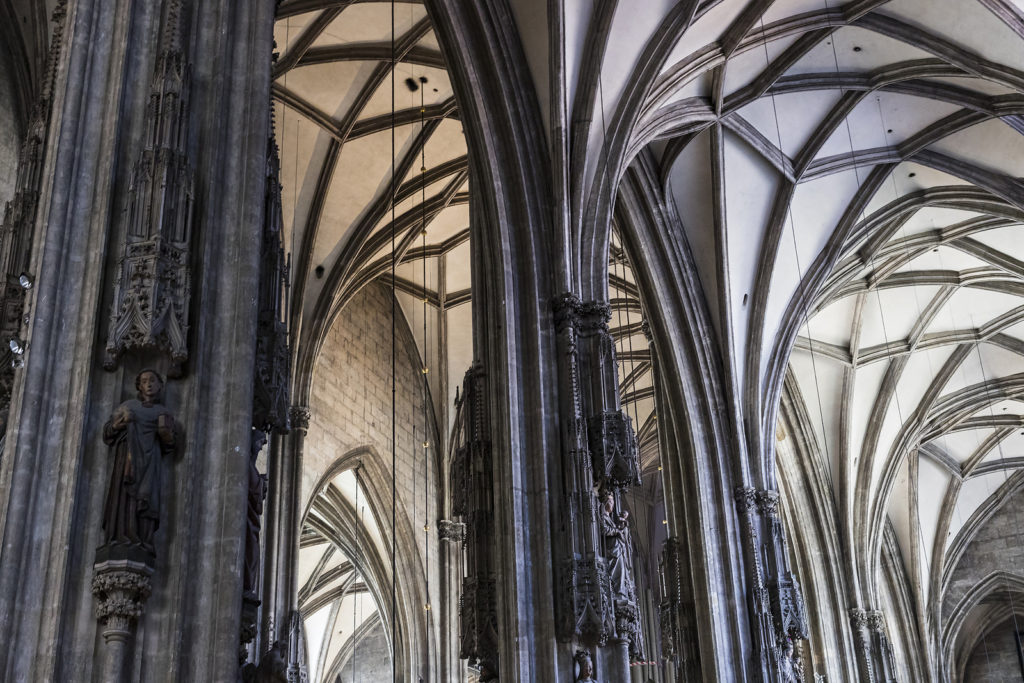
What I always enjoy going to and it’s a bit more, well, even more modern than that, there’s the Otto Wagner church. That’s more of a modern turn of the century, so 19th century, not 20th, church, which is a bit on the outskirts of the city, but it’s on a hill above an old mental asylum.
It’s a great place to go for walks and hang out. It’s empty now, but you still have the feeling of the church and especially if you go on a bit of a darker moodier day, it’s a really great place to go. And then when you’re up there, again, the views over the city are just stunning.
Joanna: Actually, you mentioned that asylum. I was reading that there is an anatomy museum. Is it at that asylum? Do you know?
Katharina: It’s on a different asylum. We’ve got a lot of shrinky things going on since Freud.
Joanna: A lot of shrinky things. Oh, that’s awesome! Are there a lot of psychology places to visit?
Katharina: Yes. Obviously, there’s the Freud Museum itself and then, as you mentioned, the museum Am Spiegelgrund, which was a mental institute for children. You see the things like how they were treated, in the further sense, so, all from electric shocks to brain surgery, amputations, but, like, for things that wouldn’t even be considered mental illnesses these days, just kids being kids and stuff. So, it’s really, really creepy. And yes, and that’s also an old mental institute, the museum.
Joanna: I think that the history of psychiatry really is very dark and scary.
There are also some other darker places, aren’t there, around Vienna?
Katharina: Yes. I think that has a lot to do with the Viennese’s mindset. Viennese people are known for complaining a lot and having a very, very dark morbid sense of humor. Maybe that’s why being married to a Scot isn’t that weird for me.
For example, the central cemetery, the Zentralfriedhof, is a place where you just hang out. It’s basically a park. You go there for picnics and stuff. And there are tons of famous people buried there, from all the Strausses to Brahms and Beethoven and Falco, obviously. So, that’s just the thing.
And the Zentralfriedhof is huge. It spans, I think, three tram stops or four or something like that. So, it’s really, really massive. But people just go there to hang out and have picnics.
First, when I moved to Vienna, it was kind of weird for me to like, ‘Okay. We’re having a picnic on a grave.’ But it’s just the thing they do.
But there are just so many things. It’s also in the jokes and the Viennese humor. There’s a thing when someone fancied themselves up, like, ‘Oh, yeah, you’re going to be a pretty corpse.’ Okay. These are things that are just completely normal for Viennese people. And since I’ve been living here longer than elsewhere, you just get used to it, I guess.
We’ve got a torture museum. We’ve got three different catacombs, one, obviously, below St. Stephen’s Cathedral. But the one that I prefer most is the Capuchin Crypt, which is the crypt where the emperors are buried. It’s a bit less spooky, but you still have all our old emperors buried there. So, that’s also very cool. But yes, it’s just one of those things.
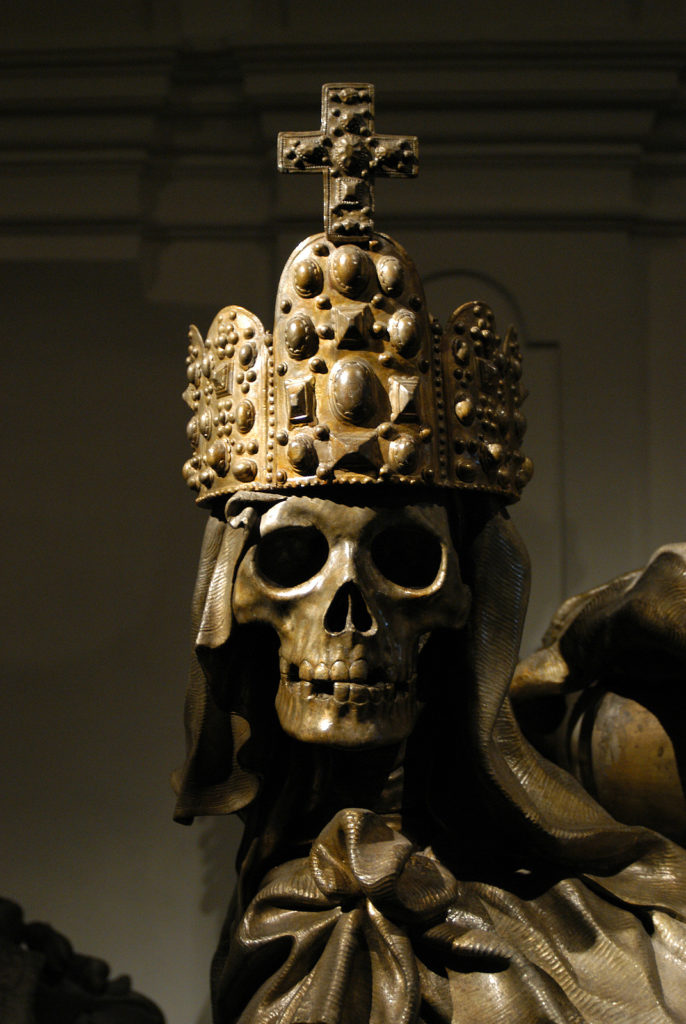
When you’re looking at Vienna, you just end up with just so many weird and quirky things. I think going around and reading the legends that go around, because then you have like street names and you’re like, ‘Okay.’
For example, this one corner at St. Stephen’s Cathedral where the wind never blows because the devil lost the wager. And then you have a wall where half a kind of goblin figure sticks out because that’s an old legend around the Turkish seat.
So, these are things that are just so ingrained in the city’s day-to-day life that I just find it would be much more fun to have a guide around the legends rather than an actual just regular guidebook. And that’s also why I just got stuck on the legends so much. Some, obviously, I adapted to my needs, but so many was just like, ‘Oh, that’s great. I didn’t know that.’ And the more I read about it, the more I got really drawn into that whole mysterious aura, I guess.
Joanna: I have a guidebook here. I tend to start with those, but for the physical landscape of the city, so you know where to stay and you know which bits to go to. But then as you say, I tend to then research stuff that is never in the guidebook.
We enjoy this kind of thing and we write the darker books, whereas a lot of people aren’t necessarily going to visit a cemetery or a catacomb, but I certainly will be.
Katharina: I think what’s very practical about Vienna is that the city center, the first district is just a little round district. It’s surrounded by the ring road, and within that and around the ring road, you can just hit the most important things.
You can just wander around, you’re like, ‘Oh, cool. What’s that? Oh, that’s the Imperial Palace. All right. Let’s walk on.’ So, it’s really like you just stumble from one thing into another and you don’t need to be as, ‘Okay. I need to walk there, and then I need to walk there.’
You don’t need to be as uptight because Vienna isn’t that big, really. And then you go up to the outer districts. But I think that’s also very practical about it. You don’t need to plan it very, very, very tightly because you can just walk a lot. And I’m just a very walk-y person when I’m in a city. So, I try to do everything by foot as possible.
Joanna: Me too. I really like to walk around cities. And it’s good to hear that it’s not that big physically, but it is pretty dense in terms of the cultural and historical places to visit. I don’t think I could get through everything in a weekend, that’s for sure.
I did want to mention the Klimt, the Kiss, which is one of the most famous paintings in the world, is in the Belvedere palace. Is that the palace you mentioned?
Katharina: No. We’ve got tons.
We’ve got the imperial palace, the Hofburg. This is really where the emperor stayed in the city center. The Belvedere was a little bit on the outside of the first district, but still within comfortable walking distance.
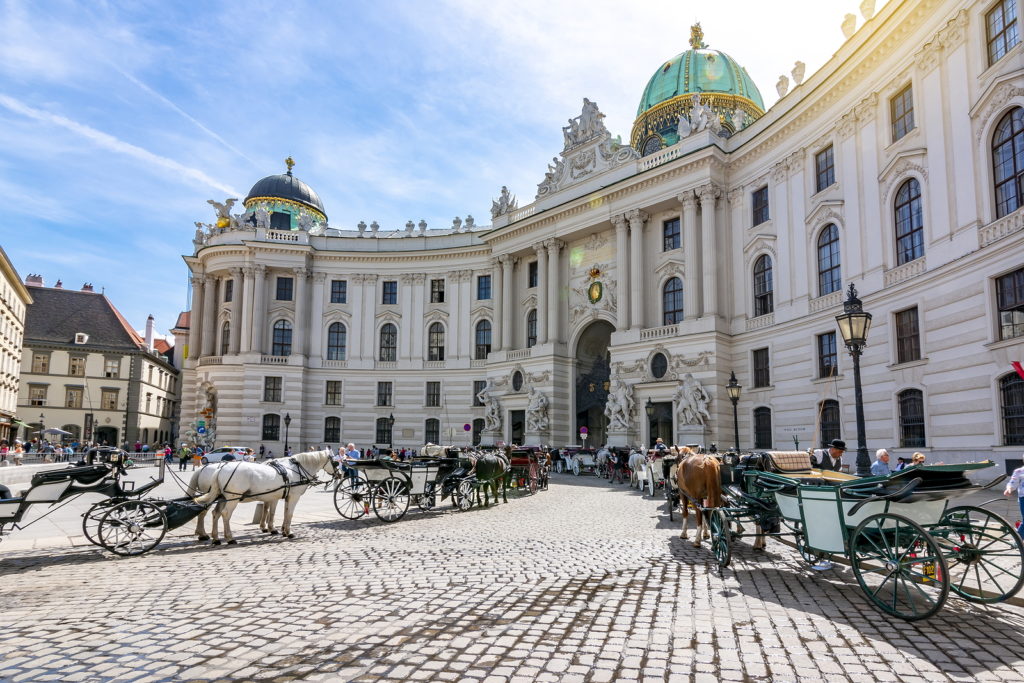
And there are actually two Belvederes. There’s one a bit further up the hill and a bit further down the hill. And the balcony of the Belvedere was actually where our declaration of neutrality was signed when the Second World War was over. And so that’s always an important place for us to go to and to visit.
It’s funny because it took me such a long time to get to all these museums. And what I actually did was, once a year, there’s this long night of museums, and they do it in a lot of cities these days. But I really enjoyed that, getting one ticket.
It’s mobbed, but you also get to go to these museums where you wouldn’t usually go to. You go to the little things, to the special exhibitions. For me, Klimt was one of those things. I always wanted to see it, but he’s a bit too glitzy for me, I guess.
Joanna: Yes. Again, lots of gold!
Katharina: Yes. So, it was one of those, ‘Okay. I’ve seen it.’
If you’re staying with the wacky, colorful things, there’s Friedensreich Hundertwasser. Let’s say he was inspired a lot by Gaudí. There is his KunstHaus, which is a museum and there’s a restaurant in it and there are no straight floors. It’s all wobbly, so don’t go there drunk or you might feel like you are. But they also have a lot of special exhibitions as well. That’s always a fun place to go to.
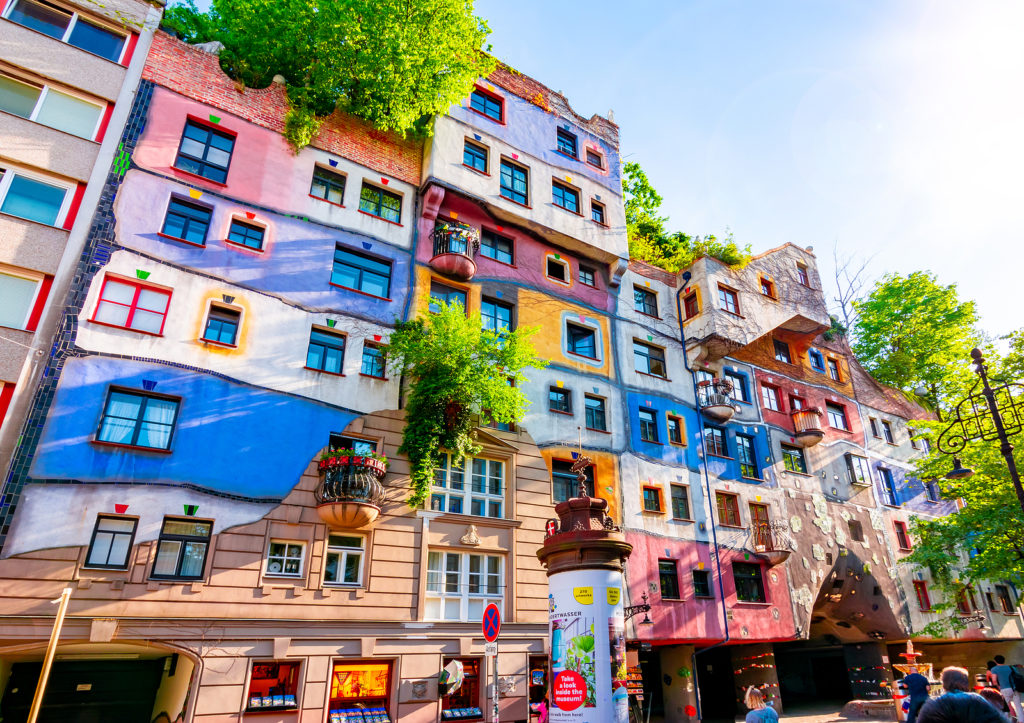
The Albertina is my favorite museum because it has a big range. There’s always a modern exhibition, but the main bit is, let’s say, impressionist to modern and a huge collection of impressionist painting. I always love to go there and try to go there at least once a year.
I think the great thing about the Long Night is that you really have this big list and then their shuttle bus is taking you to and from and I always like that.
I always will visit the imperial palace, the Hofburg. It has one of the most magnificent libraries. It’s just one of those things. The big hole in the library, the way you imagine it when you watch too much ‘Beauty and The Beast’ as a wee girl. Those are the things you really have to do.
Then a bit outside of the city, Schönbrunn Palace is just one of the famous ones. It’s a bit less dark as well because it’s bright yellow, actually. You always find a ton of tourists there, obviously. I’ve actually never been inside, but the park is beautiful to just walk around them.
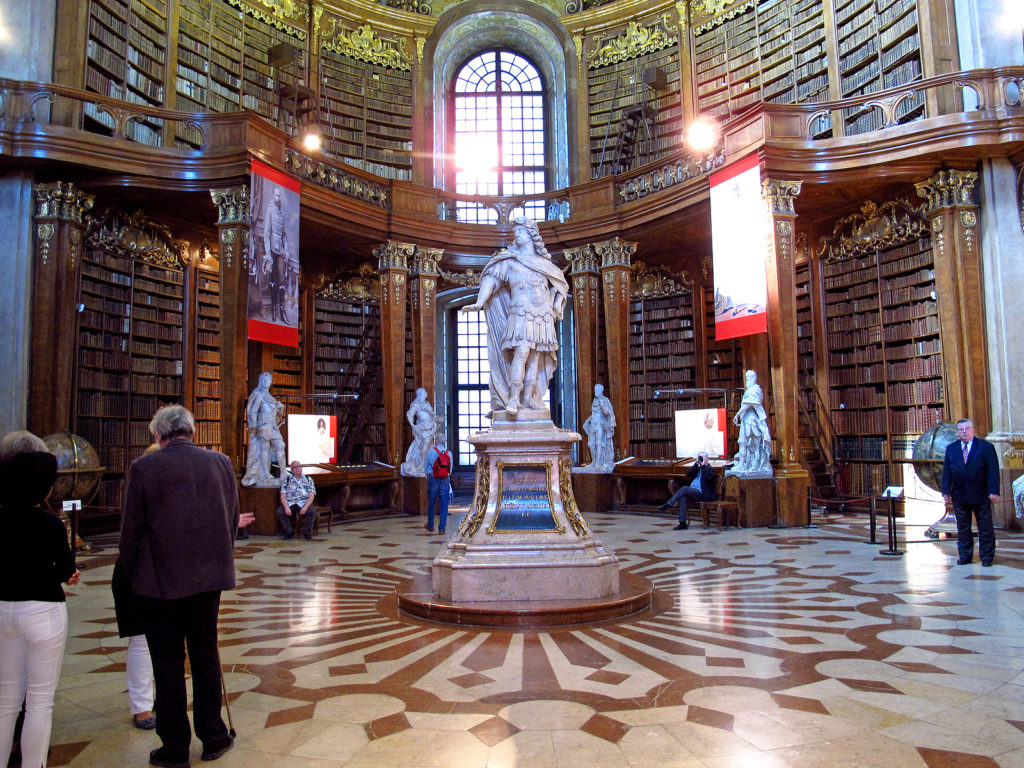
There is a zoo next door and it’s just a fantastic zoo to just have a day out and it’s already a couple of hundred years old as well, the zoo. It’s really nice to walk around and see the animals in the fancy old buildings.
There’s plenty of things to do, but it really took me to have someone else to show it all to, to go to those places for the first time myself, even though I was already living there for, I don’t know, five, six years.
Joanna: It’s funny, isn’t it? I almost feel that now in this time of pandemic, we can’t even go very far from our house, let alone go to the next town or some of the places that you just say, ‘Oh, well, I’ll do that one day,’ and then suddenly, you’re not allowed to go anywhere.
All these galleries and museums, they’re all shut and nobody is going…or even to churches, we’re not allowed to go into churches here. It’s so interesting. We take these things for granted, and then we move. We used to live in New Zealand and now, I’m like, ‘Oh, there’s that one thing I didn’t do in New Zealand that I really need to do.’ We take these things for granted, and then we move.
Katharina: Absolutely. We now live about half an hour outside the city and I haven’t been in since November because the problem is because everything is shut so you can’t even grab something to eat because you’d have to pre-book it.
We’ve been in November, it was really, really creepy because on a Sunday here, everything is shut apart from a couple of touristy shops and restaurants. But even then, there are tons of people around. Now, to have it like, I don’t know, maybe Sunday 5:00 a.m. whatever, it was just so empty and so weird.
If you can’t go in anywhere and it’s cold, you can’t go anywhere and sit down and have a coffee, which is really what Vienna is about, you can’t spend a day in the city without having coffees and cakes, really.
Joanna: Which is really important. You did mention that, on a Sunday, everything’s shut. Usually, it’s a Monday, museums and things are shut. So, is that a really important thing?
Katharina: It’s a Catholic thing.
Joanna: Is that just the churches are shut or all of the museums and everything too?
Katharina: Everything is shut. Everything. All the shops are shut. It’s just restaurants that are open and you might be able to go to the zoo and stuff, but Sunday everything is closed.
Joanna: A day of rest.
Katharina: A day of rest, basically. Austria is still, I think, maybe not anymore, but let’s say historically heavily Catholic. Every once in a while, some trade unions try to get the Sunday closing thing lifted, but it really never works.
Joanna: That’s really interesting. And that is certainly something important to know if people are going to have a long weekend in Vienna, which was what I was planning. I certainly have to make that part of the plans.
You have mentioned coffee and cake and eating and drinking is so important.
And the other thing is there are often these kind of touristy cafes that they take people to. And those are not the ones necessarily to go to. Right? Do you have any thoughts on the eating and drinking and what coffee and what cake?
Katharina: I already had to laugh because this Christmas, one of the Hallmark Christmas movies was ‘Christmas in Vienna.’ So, I was like, ‘Okay. I have to watch this.’ And I was like, ‘They’re always eating.’ And my husband is looking at me like, ‘Yes, that’s what you do.’ I’m like, ‘Yeah. Okay.’
I mentioned the Café Landtmann and that’s, more or less, one of the more touristy places because it’s in the city center and it’s one of the more fancy ones, but I don’t think that’s really a big problem. If you are in Schönbrunn, etc., obviously you have the things where, yeah, okay, it’s touristy, but it’s just the whole deal to have the old cafe, the grumpy waiters who barely talk to you.
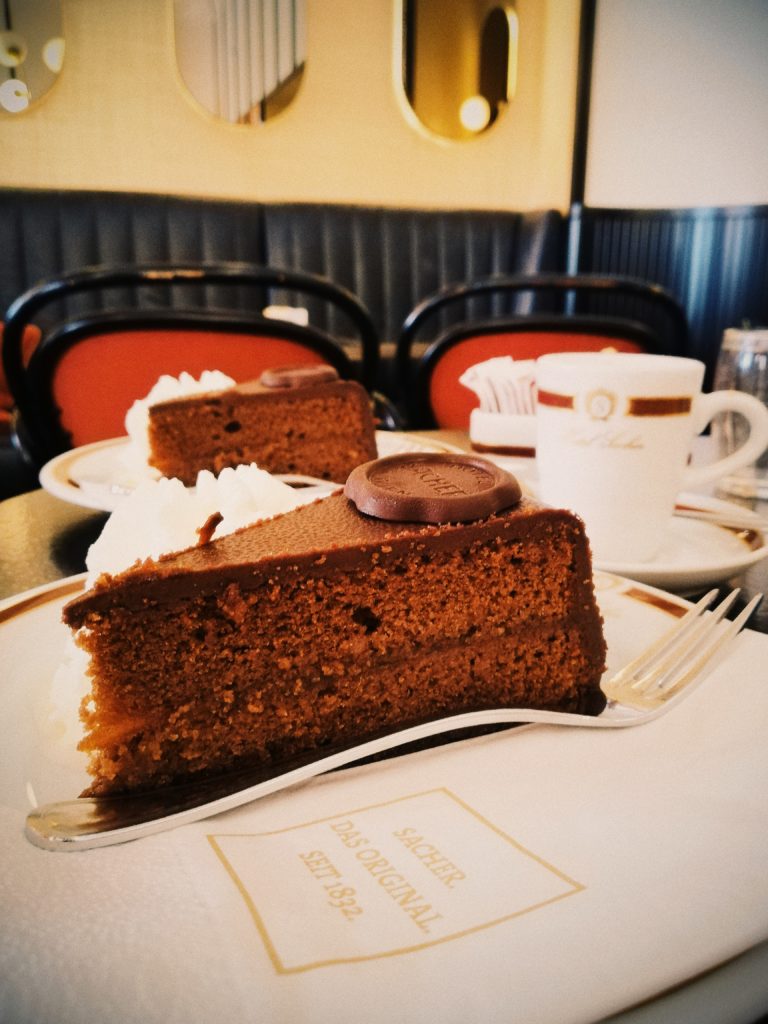
Something that’s also very normal for a Viennese coffee culture is to go there in the morning, sit there with a coffee all day and then read 50 newspapers, for example. And there’s been all the old writers and Freud, etc. They’ve been doing that.
Some of my favorite ones of the let’s say fancier ones, there’s the Café Schwarzenberg also very fancy and the Café Central. And what’s very normal for cafes in Vienna is that you have a huge selection of cakes. When you came in you have this glass board where you just pick whatever you fancy and obviously the Sacher cake, classical chocolate cake is one of the most famous ones.
Then also always nice is an Apfelstrudel, so it’s apple in filo pastry. Then what else can you do? Then you can get a lot of cakes that are obviously a bit more imperial. There’s an Esterházy cake, which is layers of nuts and cream.
They always come up with new stuff as well. I think the best thing really to do is have a look at what’s there and the selection of the day, basically. And no matter which café you go, you go in, you will get that.
And then there are actually two… Well, one is Roast and the other one is a café called Alt Wien, which I named the café in my books after. The Alt Wien café is very smoky. You’re not allowed to smoke in cafes anymore, but I think it’ll take another couple of decades to get the smoke out of those walls. It’s one of those a bit darker kind of places but really cozy at the same time.
Then at the Roast, that’s my local coffee dealer. And there’s also the Café Diglas where you don’t have that much of a selection of cakes, but the ones that are there are fantastic and it’s a bit more off the beaten path track as far as you can get in the city center.
I think when you wander around the city, you always end up either somewhere that just looks nice. And I don’t think I’ve had many bad experiences in cafes, to be quite honest, like I said, apart from rude waiters, but that’s just part of it
Joanna: That is just normal. Definitely, we should set aside some time for coffee and cake.
Joanna: You mentioned some of the famous musicians who were buried in the graveyard.
Vienna is famous for concerts as well, and classical music in particular.
Katharina: Yes. And we’ve got a lot of opera houses and you can go to see operators as well. The cool thing about the opera house is there are a lot of last-minute cheap tickets, if you want to stand. You can pay quite a few hundred euros for an opera ticket, especially for some of the big ones.
There’s also the Volksoper, so, there are more places to play operas and operators, etc. For example, go there in the evening, you might get a last-minute cheap ticket that’s left over, etc. The only thing is be careful, there are always people dressed up like, I think, it’s supposed to be Mozart hanging around in the first district in pants and everything that looks like a tourist. I’d be wary of those.
I think from a cultural standpoint, and there is a lot of musicals as well. You can always get to hear or see something and nice concerts in little venues in the city. You won’t get bored, let’s put it that way.
Joanna: I’m not massively into classical music, but I do find that listening to a recital in an incredible venue, whether it’s a church, often they have music in churches and this type of thing and big concert halls, it’s such a thing to do even if that’s not normally something you do.
Katharina: I have also seen some operas. I think there are so many cool venues. There’s once a year, in front of Schönbrunn Palace, there’s an open-air concert, a classical concert. That’s always cool.
Then a bit outside of Vienna, there’s an opera venue in an old quarry, which is just, for the location alone, is just fantastic. There are things, if you drive around a bit and if you say, ‘Okay. I’m there,’ or if you’re flexible with your time and if you said if you want to do a long weekend, well, you might think about using Sunday for travel or eat or relax or do something, but there’s not going to be much open on a Sunday. You have to include some working days as well, let’s put it that way.
Joanna: You did mention the Christmas markets briefly and you’ve got a nonfiction book about Christmas markets. So, tell us a bit about them.
Why are the Christmas markets so special?
Katharina: I always enjoyed going to the Christmas markets and I’ve got a lot of friends online, in the U.S. etc. And I post the pictures and people are like, ‘Oh, my God, it looks so great. Can you post more?’ So, I ended up starting writing blog posts about it, and then ask my husband for his input because he was always like, ‘I don’t want to go to a Christmas market,’ a bit of a grinchy mood.
He’s like, ‘Okay. If you like it, then it’s worth recommending.’ And out of those blog posts, then ended up a Christmas market guide that then spread out beyond Vienna. Now is actually two, split up into Vienna, the city, and everything else in Austria.
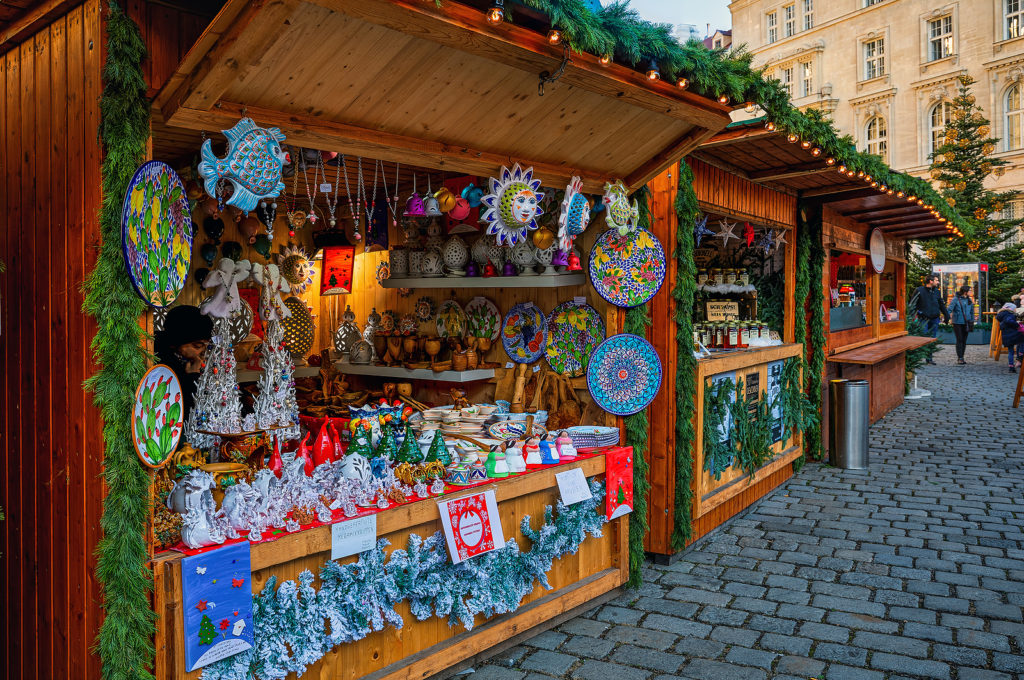
I think what makes it so special is, obviously, the whole cities are lit. Vienna is still, especially the city center, still a very old city, so it doesn’t look much different than a couple of hundred years ago. There are fewer cars, yes, because there’s more pedestrian area, but the houses very much look the same.
There are Christmas markets where you get the tacky stuff, but there are fewer and fewer. Most of the Christmas markets there, you get fantastic craft things. You’ve got local artists where you can get great presents, things for yourself. There’s always great food at Christmas markets, obviously. You can spend the day just eating your way through the Christmas markets, really, if you’re hungry or not.
I’ve already mentioned the one in front of St. Charles Cathedral. I love that because it’s just, basically, arts and crafts market. Then we’ve got a Military History Museum, which I should have mentioned with a bit more darker places, because obviously Austrian military history is not a cheerful thing to talk about.
It has a medieval Christmas market in front of it and that’s also really great. Schönbrunn Palace… There’s one in front of all the big places. But again, you can just wander around the first district and do, like, 10 Christmas markets in a day, all within walking distance, and that’s kind of really nice.
Joanna: Wow. That’s a lot of markets. When does it run? Because it’s for Christmas.
Katharina: This usually starts at the end of November. Some open mid-November, but there are very few. Let’s say the last week of November, you’re quite safe. There are some Christmas markets and castles outside the city, which are only on weekends. I think starting from the last week of November, you should be good.
Joanna: Fantastic. And then I wanted to ask because I think many people who might not be European, particularly, but Austrians speak German, the German language, but they’re not German people.
What are the differences between Austrians and Germans?
Katharina: I think it’s a little bit where, in German, when we say English, we often mean all Brits, and my husband jumps a couple of meters. Even though we’re much closer together as far as location is concerned, it can be just as different as Brits and Americans, really.
There was an Austrian writer who once said, “There’s nothing that separates us more than our common language.” So, an Austrian will always be able to tell if you’re a German. We’re like the lot of Brits who play Americans, actors, stuff like that, that barely works between German and Austrian. And a lot of Germans simply don’t understand us.
So, it’s really, like, if you’re from London and you go somewhere to rural Scotland and you don’t know what they’re talking about, that’s what they feel like. And it’s also about the same when people learn German. Yes, people in Austria will understand you, but that does not necessarily go both ways. So, yes, you’ve got a very, very strong accent.
I would say Germans are a bit more proper, a bit more strict in all the way. People think about German to be very rule-driven and precise and stuff like that. Austrians not so much. I came up with the French word, laissez-faire attitude. It comes with all the, ‘It’ll be okay. Whatever. We all die.’
I think it’s a bit more relaxed attitude. That’s why there are often cultural clashes. Yes, we do get very, very grumpy if people mix us up with Germans. And at the same time, we often have, “Oh, you’re not German. That’s good.” I still think it is one of the biggest and best marketing strategies in history, to make people believe Hitler was German. That worked well for us.
Joanna: I wasn’t going to mention Hitler, but since you did.
Katharina: It comes with a morbid thing, you know?
Joanna: You’re right. You’re absolutely right. And maybe we’ve just surprised some people listening. There are some very important cultural things in Germany around the Nazis and not allowing certain things like Holocaust denial.
Katharina: It’s the same here. Being a Nazi or the Holocaust lie, as we call it. If you say the Holocaust never happened, that would be a criminal offense. Also, all the insignia, etc.
A lot of things that you see, let’s say, on the telly in other countries would be very, very grave criminal offenses here. But yes, we obviously grew up with the stories of our grandparents, but it’s part of our history. It’s like colonialism is part of yours and slavery is part of Americans’ history. You just have to, I guess, live with it and learn from it.
There are a lot of old concentration camps that you can visit. There’s none in Vienna, so I didn’t get on my dark places to visit in Vienna, but, obviously, Auschwitz is, not far. And you can still visit that. It’s not a nice place to go to. It really isn’t.
I think that’s part of the things we blame each other for, the Germans and Austrians. But we’re actually happy that the whole world thinks that Hitler was German. On the other hand, we do insist that Mozart was Austrian, of course.
Joanna: It’s also interesting because I feel like the British Empire, the Austro-Hungarian Empire, part of our cultures is built on losing a big empire. I think that shows in the architecture, in perhaps some of, as you say, the okay, such is life, we have to own our history, own up to it, but equally, this is our culture now.
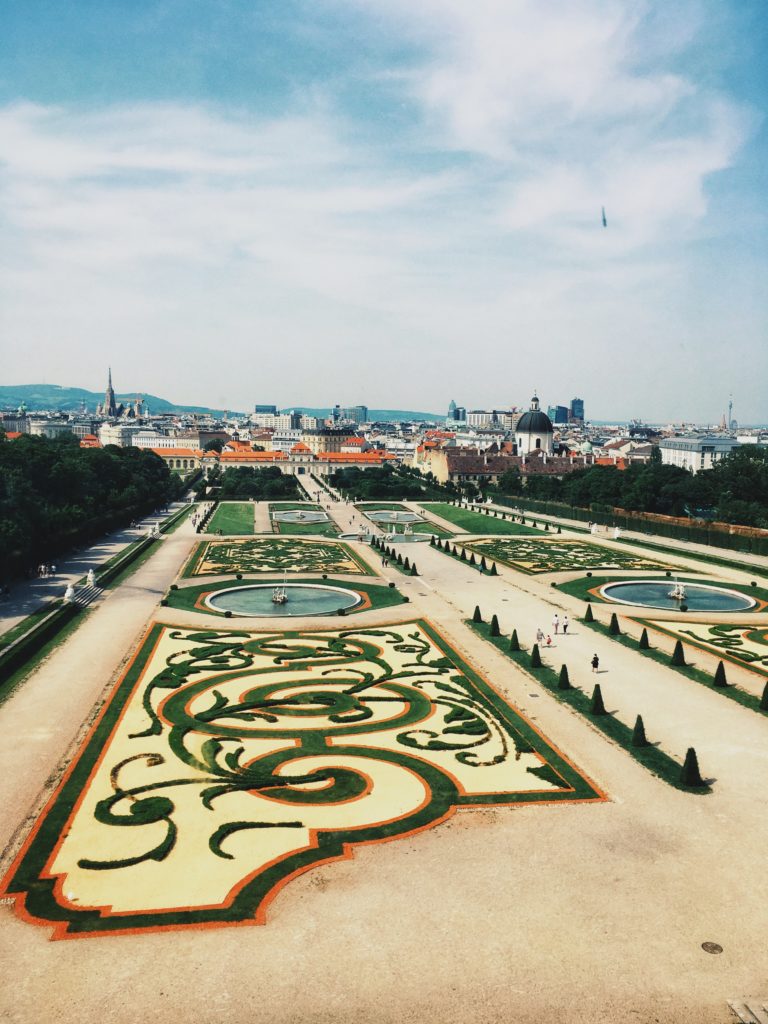
You can still be proud of who you are now and acknowledge the darkness that has happened, but I do think probably it would be the same in London. It’s like these big monuments to the whole world that Queen Victoria rules, but not anymore. The same with the Austro-Hungarians, right?
Katharina: You grow up and you learn Austrian history from a time where Austria’s spanned from Spain to deep into Russia, basically. There was not just Austrian-Hungary or before that even.
‘We used to be this great, great country and now we’re this tiny nation in the middle of Europe.’
But I think what has stuck most in the Austrian psyche was after the First World War, when monarchy was abolished, all the inherited titles were abolished as well. All the families who could call them lords and ladies and whatever else, they can still do so in Germany, but not in Austria.
I think that turned us into a country that’s absolutely crazy about titles: academic titles, job titles, Mrs. Doctor or whatever nots, and get the weirdest titles. I think it’s on the website actually of the Viennese opera, when you book a ticket and you can scroll for half an hour through all the real or made-up titles people can have. That’s how we still grieve our monarchy. We are just really crazy about titles.
Joanna: That’s so interesting.
What are a few books about Vienna or set in Vienna that you would recommend?
Katharina: I started with a love story because it’s really great. Daniel Glattauer’s ‘Love Virtually.’ And I try to look up which of those books have been translated into English. And he’s got a follow-up. It’s called ‘Every Seventh Wave.’ It’s a really, really sweet love story about this couple who met online.
Then another one, which has been a major, major bestseller here, Marc Elsberg’s ‘Blackout.’ ‘Blackout’ is exactly what it’s saying. It’s about this major blackout that spreads throughout Europe and you have the point of view from different characters in Austria and Germany, etc., who deal with it. It’s a very, very intense, intense thriller.
Then there is a massive Austrian crime novel scene. If you’re in Vienna and go into a bookshop, you’ll have a big section of Austrian crime novelists. Try Wolf Haas. He’s one of the darker, more cynical ones. And they’ve actually been translated into English as well. So, that’s very cool.
And you get very, very deep into the Viennese psyche and you have a lot of the crimes set in very historical monuments, like we have these old-fortified towers from the Second World War that are sometimes empty, sometimes not. Those are really, really great if you want to go into the grumpier side of Vienna.
The last one I would recommend is Elfriede Jelinek’s ‘The Piano Teacher’ because it’s just a bit more different, I think, a bit more literary, I would say.
Joanna: Those are great.
Where can people find you and your books and your podcasts online?
Katharina: The main hub is bruadarach.at, which is actually Scots Gaelic for dreamer or visionary. Then I’m also at wiener-blut.com. This is for the whole Wiener Blut novels. And we used to have a short story podcast, Every Photo Tells, but you still can get all the old episodes there.
Joanna: Fantastic. Well, thanks so much for your time, Katharina. That was great.
Katharina: Thank you for having me.


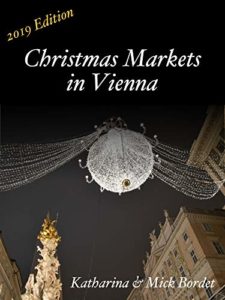

Having lived in Austria (not Vienna) for around 25 years now and before that having a Viennese penfriend I loved listening to the tales of the city. Said penfriend is the daughter of an architect so my first visit to Wien involved all the main sights you mentioned (in front of the KArlskirche was also the first time I saw an alphorn being played!).
Couple of things I’d add:
– most of the tourist sights are open on Sundays (I spent the Easter weekend 2019 in Vienna as my OH as a farm boy had never “done” Vienna & with a little bit of planning it was still very worth it)
– at Schönbrunn, the cafe at the zoo is called the Orang’erie (built like an orangerie but with a huge glass wall for the orang utans to observe the humans)
– wine wasn’t mentioned!!! You can’t go to Vienna without wine (there are actually some fantastic wines made within the city limits, not just Austrian wine in general). Make sure you get a recommendation for a small non-touristy place to go.
– the Naschmarkt is quite fun on a Saturday morning, although I felt it was a bit run down compared to in the past when I was last there. But around that area are all kinds of Asian restaurants (when I go to Vienna I’m desperate for food variety I can’t get in the province so approach things probably differently from what an average tourist may want)
Thanks so much for sharing, Kathryn!